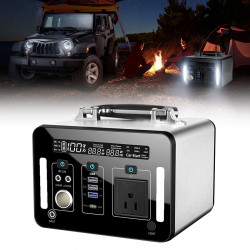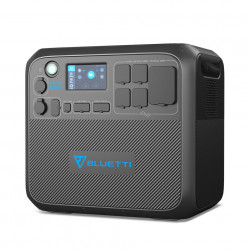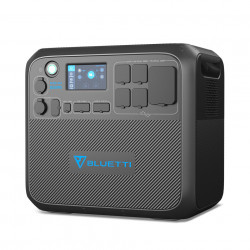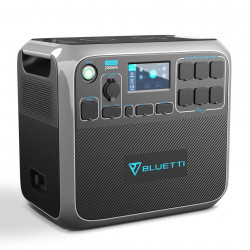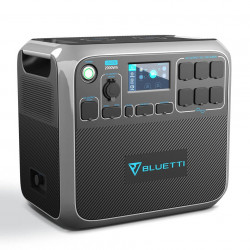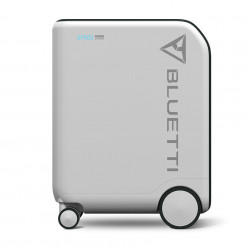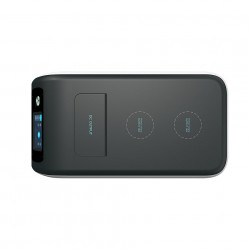Portable Power Station
Customers are looking for dependable backup power options as power outages grow more often owing to aging infrastructure and extreme weather. The most popular transportable, off-grid electricity option is now portable power plants. But how precisely do these gadgets operate, and are they worth the money? This article thoroughly analyzes portable power plants, covering all of their essential elements, features, applications, and financial worth.
A portable power station is a small device that uses batteries to store and provide electricity. It is used for emergencies or to charge electronics while traveling. A sturdy housing encases outlets, ports, an inverter, and a lithium-ion battery. The amount of time the station can power devices before recharge is determined by the battery capacity, expressed in watt-hours (Wh).
Portable power stations provide a flexible, portable power supply. They are perfect for camping, RVs, construction sites, and emergency supply packages because of their small size and portability. Stations can be refilled via solar panels, automobile charging adapters, or wall outlets. More gadgets and appliances can run on higher-watt-hour batteries before recharging.
How Do Portable Power Stations Work?
The following essential elements are combined to create portable power stations:
- Battery - The capacity of lithium-ion battery packs ranges from 500 Wh to more than 2,000 Wh. They receive and distribute energy from electrical sources.
- Inverter - transforms the battery's direct current (DC) into alternating current (AC). This enables the battery's stored energy to power everyday household electronics.
- Outlets - Station units have multiple AC outlets, USB charging ports, and a 12V car lighter socket to connect devices.
- Display - The remaining battery %, watts used, input/output voltage, and other statistics are shown on an LCD panel.
- Charging ports - Utilize the built-in charging ports to recharge the battery by plugging them into electrical outlets, solar panels, automobile charger adapters, or generators.
Devices connect to the station to receive electricity from the battery. The inverter within the station converts stored energy into usable power. This power can then be utilized by the devices.
Users are notified of the remaining charge via the display. The battery uses the input charging ports to refuel after it runs out.
Are Portable Power Stations Worth it?
For various situations, portable power plants offer dependable, sustainable energy. Among the advantages that make them a wise investment are:
- Emergency backup - During weather-related outages, stations can securely power necessities like phones, lights, and medical equipment.
- Outdoor recreation - Portable power is essential for outdoor work, hobbies, road vacations, tailgating parties, and camping.
- Sustainability - Clean energy and lower energy bills are provided via solar recharging capabilities.
- Portability - Transporting equipment for off-grid power needs is made more accessible by its compact size and design.
- Affordability - less expensive initially than generators, and no continuous fuel costs.
- Versatility - the capacity to power a large variety of goods and gadgets. Ideal for CPAP machines, mini-fridges, and other compact appliances.
- Durability - Protective enclosures and lithium-ion batteries make regular outdoor use possible.
- Advanced models - High-end stations have convenient features, including innovative LCD interfaces, fast charging, AC/DC compatibility, and car jump-starting.
Whom Are Portable Power Stations Best Suited For?
Although they can be helpful for many different types of users, power stations portable are especially advantageous for:
- Campers & RV Users - Run appliances and gadgets off-grid when RV camping. Stations help you use devices without shore power for phones, fans, lights, small fridges, and other appliances on boats.
- Emergency Preparedness - During blackouts or natural calamities, have backup electricity for your house. During a power outage, you can use a generator. It can charge phones, power medical equipment, run radios, keep food cold, and operate essential appliances.
- Outdoor Enthusiasts - Bring a station to keep your phones, speakers, fans, tools, and other gadgets charged when hiking, kayaking, or going to the beach. Make sure you have electricity to take advantage of an excursion.
- Remote Workers - Power a laptop, WiFi hotspot, monitor, printer, router, and other necessary work equipment with a station at a park, natural area, or isolated off-grid location. Stay productive wherever you are.
- Tradespeople - Power tools, lighting, battery chargers, and other equipment used on construction sites with restricted access to AC power. Excellent for field jobs, facilities, construction, and maintenance.
- Event Vendors - Power booth lighting, music, inventory management devices, point-of-sale systems, and more with dependability. Stay away from gas-powered, noisy generators at outdoor events like markets.
Conclusion
Portable power stations have batteries, inverters, and outlets, giving reliable off-grid electricity on the go. They offer sustainable backup electricity for outdoor activities and emergencies thanks to their renewable recharge and large power capacity. Portable power plants are better than traditional generators. They cost less, benefit the environment, and have versatile uses.
